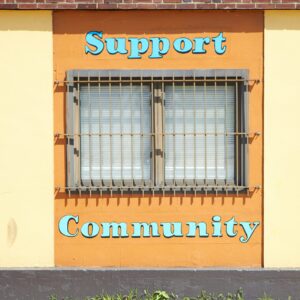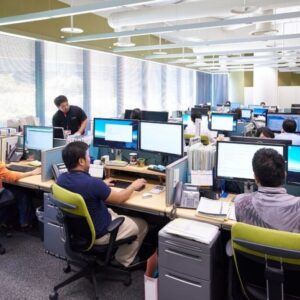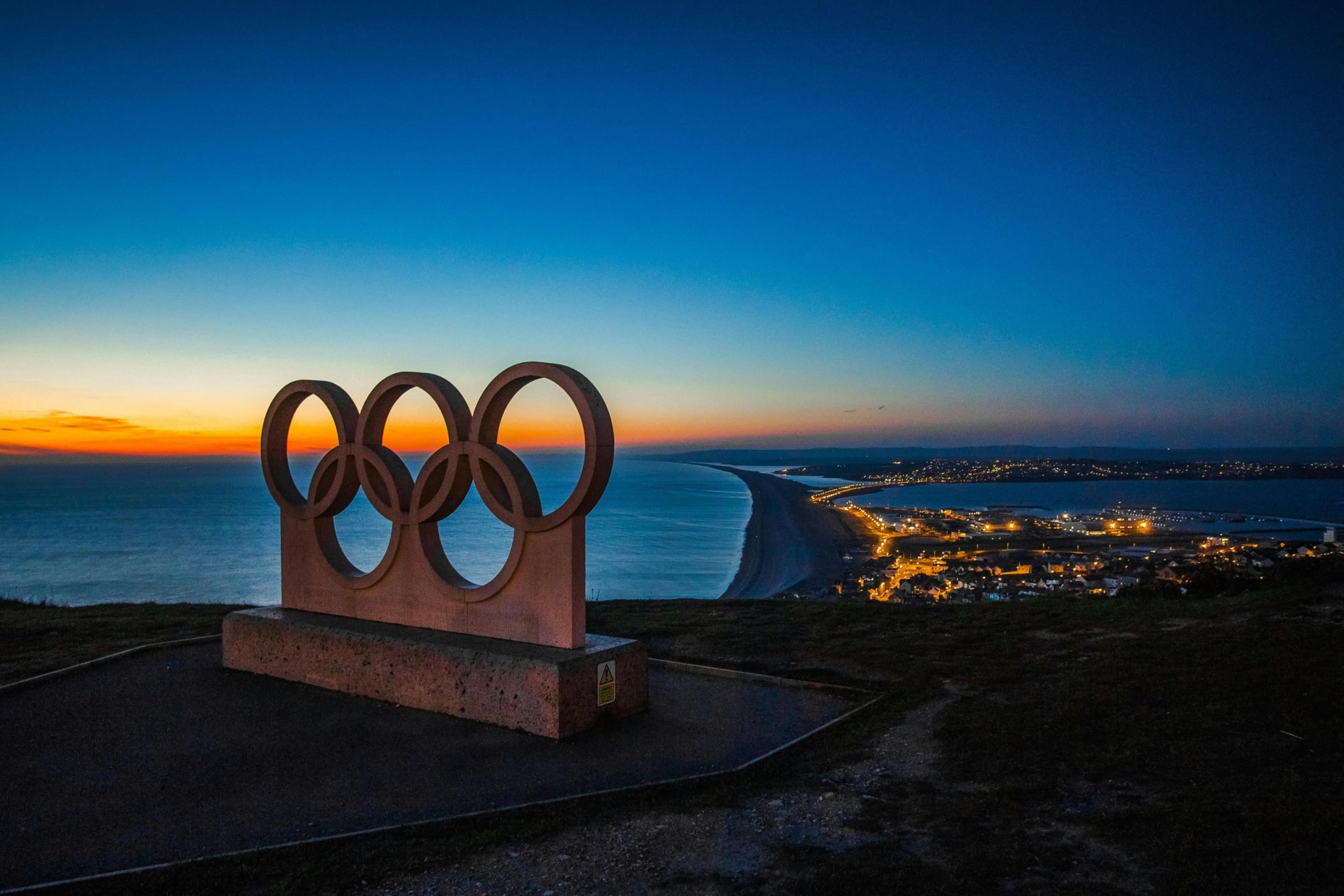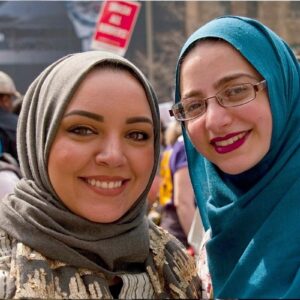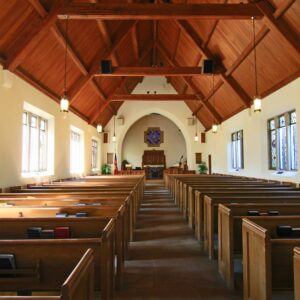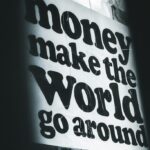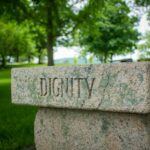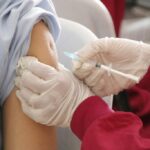
Violence by law enforcement against journalists covering the recent protests in the United States has sparked federal lawsuits and renewed concerns over the erosion of press freedoms. But the incidents also reflect a dangerous and escalating pattern of attacks on civil society writ large that compromise the ability of nonprofits to support communities, fight injustices, and safeguard democracy.
“Reporters and the way they are treated…serve as a canary in the coal mine, so to speak, for the health of a democracy,” Katherine Jacobsen, of the Committee to Protect Journalists (CPJ), told NPQ.
Jacobsen, who worked as a journalist reporting from Russia and Ukraine before joining CPJ, emphasized the gravity of the moment. She pointed to attacks on the media being historically one of the “very clear indicators” of democratic backsliding. “Whoever controls the media is able to control the narrative,” she said, “and whoever controls the narrative can more easily direct the country.”
“Reporters and the way they are treated…serve as a canary in the coal mine.”
Amid an escalating tension in the United States between peaceful protesters and federal law enforcement and military officials deployed by President Donald Trump, members of the press have come under persistent attack—a deeply troubling sign, say civil liberties advocates, of a greater erosion of US civil society and democracy itself.
A recent report by Amnesty International noted that the Trump administration has sought to curtail the freedom and expression of the press in various ways:
President Trump has taken various steps to unduly restrict the right to freedom of expression and limit press freedom, including hand-picking which outlets can cover the White House and demonizing reporters. Before becoming president, he sued media outlets CBS News and the Des Moines Register for publishing something he didn’t agree with. He’s barred the Associated Press from covering events at the White House because he disagreed with its editorial decision to use “Gulf of Mexico” instead of “Gulf of America”.
He’s called on outlets to fire specific reporters for coverage that doesn’t paint him in a favourable light, and has quipped that he’d jail reporters as retribution for unfavorable coverage. In addition to dismantling Voice of America (VOA), along with Radio Free Asia, Radio Free Europe/Radio Liberty, Radio Marti covering Cuba, and stations broadcasting into the Middle East, he supports slashing funding for other publicly-funded broadcasters like NPR and PBS. Meanwhile, the slashing of USAID has impacted relief support for journalists at risk.
Meanwhile, the volume of incidents in which police and/or military forces appeared to target US press is alarming. On June 16, the nonprofit Los Angeles Press Club and investigative outlet Status Coup sued the City of Los Angeles and Police Chief Jim McDonnell, accusing the Los Angeles Police Department (LAPD) of unlawful excessive force, detentions, intimidation, and interference with reporters, in violation of journalists’ First and Fourteenth Amendment rights and California law. The lawsuit cites several incidents of violence, including when a police officer fired a rubber bullet at US Correspondent Lauren Tomasi while she reported live from the protests for Australia’s 9News television station.
“When journalists are intimidated or attacked, nonprofits and the American public more broadly loses their eyes on the ground.”
A separate lawsuit filed on June 18 by Los Angeles Press Club, The NewsGuild-Communications Workers of America (CWA), and several journalists, protesters, and a legal observer accuses the Department of Homeland Security and Secretary Kristi Noem of the “brutal use of force” to punish and suppress the exercise of First Amendment rights at protests. The lawsuit details multiple incidents in which law enforcement allegedly targeted clearly identifiable journalists with violence, using dangerous “less-lethal” militarized weapons such as tear gas, pepper spray, rubber bullets, and beanbag rounds.
Assaults on the press by law enforcement aren’t confined to Los Angeles or limited to acts resulting in physical injury. Detention, arrest, interrogation at the border, equipment damage or seizure, and other harassment and intimidation also threaten journalists’ ability to report, even when they follow protocols and wear clear press identification. For instance, two UC Berkeley student journalists were detained by police at two separate demonstrations in San Francisco, CA, even though they identified themselves as press, SFGate reported. In a suburb of Atlanta, GA, journalist Mario Guevara was arrested while covering the “No Kings” protest of the Trump administration. Though Guevara provided credentials and has US work authorization, according to CPJ, he remains in ICE detention pending deportation.
These attacks on the media are among the several dozen already documented by watchdog groups in June, with most involving journalists doing routine reporting at the protests, equipped with press credentials, wearing highly visible press labels, and operating in public spaces. In Southern California alone, Adam Rose, Press Rights Chair at Los Angeles Press Club, has verified over 70 incidents between June 6 and 20 in the California Press Rights Tracking Doc.
“Whoever controls the media is able to control the narrative.”
As the attacks escalate, press freedom organizations are seeing a surge of requests for legal and safety support from journalists and newsrooms. In response, five nonprofits—CPJ, Freedom of the Press Foundation, International Women’s Media Foundation, PEN America, and the Reporters Committee for Freedom of the Press—joined forces to launch the Journalist Assistance Network in May to provide legal aid, safety resources, and training.
The implications extend far beyond newsrooms. “When journalists are intimidated or attacked,” said CPJ’s Jacobsen, “nonprofits and the American public more broadly lose their eyes on the ground.” Without independent reporting, nonprofits and the communities they support could lose access to vital information, struggle to learn about abuses of power, and risk being unable to advocate for change.
Nonprofits often depend on journalists to uncover stories and document conditions the organizations themselves may not have the reach or capacity to cover. “Part of the media’s role is to show what’s happening more holistically, in a way that it’s sometimes difficult to do when you’re focused, as nonprofits usually are, on a specific issue or set of goals,” Jacobsen added.
The stakes are high. For nonprofits—but especially those focused on issues like immigration, civil and human rights, and government accountability—this erosion of press freedom threatens an indispensable means of safeguarding democracy and protecting communities.
